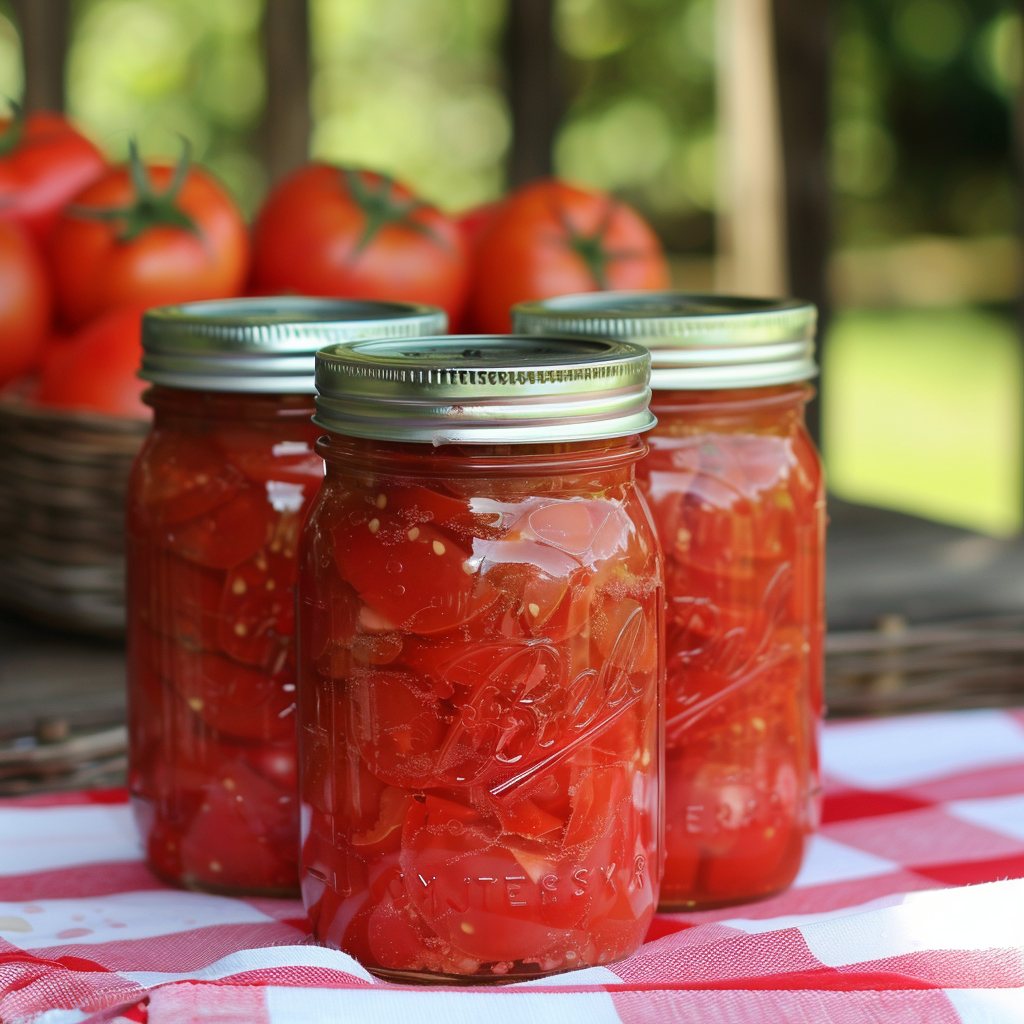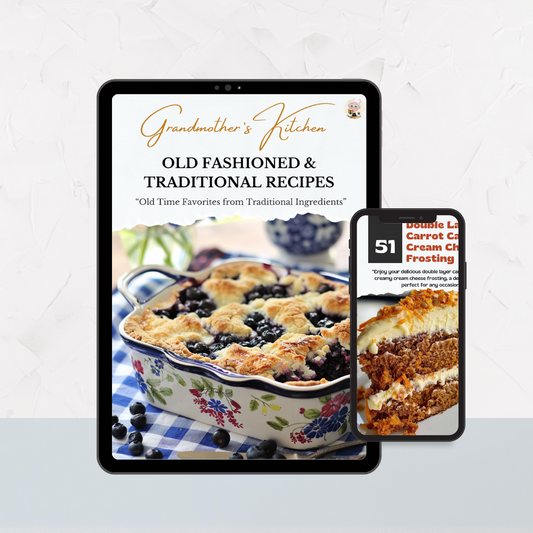Canning Tomatoes: A Lifestyle Choice for Year-Round Flavor

Share
Canning Tomatoes: A Lifestyle Choice
At one point in my life, I embraced the idea of homesteading—living off the land, growing my food, and preserving it for the colder months. It was a time when I had a young family to feed, and the satisfaction of filling our pantry with home-canned goods was unparalleled. Among the various crops I cultivated, tomatoes were always a favorite. I grew them in abundance, their vines heavy with the weight of ripe, juicy fruit. For several seasons in a row, I canned dozens of jars of tomatoes, ensuring we had the taste of summer available throughout the year. The process of growing, harvesting, and canning became a family tradition, one that connected us to the land and to each other. There’s something truly rewarding about opening a jar of home-canned tomatoes in the middle of winter, knowing the care and effort that went into preserving those vibrant flavors. For me, canning tomatoes wasn’t just about storing food; it was about sustaining a way of life, one that I continue to cherish and pass down through the generations.
Did You Know?
Tomatoes are a rich source of lycopene, an antioxidant linked to many health benefits, including reduced risk of heart disease and cancer. Lycopene levels actually increase when tomatoes are cooked, making canned tomatoes a nutritious choice.
Yield: 7 quarts
Ingredients:
Fresh tomatoes (about 21 pounds)
Bottled lemon juice (2 tablespoons per quart jar)
Pickling salt (1 teaspoon per quart jar)
Instructions:
1. Prepare the Jars:
Sterilize Jars: Wash jars, lids, and bands in hot, soapy water. Rinse well. Place jars in a large pot, cover with water, and boil for 10 minutes. Keep jars hot until ready to use.
Prepare Lids: Heat lids in simmering water (not boiling) until ready for use. Do not boil. Set bands aside.
2. Prepare the Tomatoes:
Blanch and Peel: Bring a large pot of water to a rolling boil. Cut an "X" on the bottom of each tomato. Blanch tomatoes in boiling water for 30-60 seconds, then transfer to ice water. Peel off skins.
Core and Cut: Remove cores from tomatoes. Cut tomatoes into quarters or smaller pieces to fit as many as possible into the jars.
3. Pack the Jars:
Pack Tomatoes: Pack cut tomatoes tightly into hot jars, pressing down to fill spaces. Leave 1/2-inch headspace.
Add Lemon Juice and Salt: Add 2 tablespoons of bottled lemon juice and 1 teaspoon of pickling salt to each quart jar (1 tablespoon lemon juice and 1/2 teaspoon pickling salt for pint jars).
4. Process the Jars:
Remove Air Bubbles: Run a non-metallic spatula around the inside of the jar to remove air bubbles.
Wipe Rims and Apply Lids: Wipe jar rims with a clean, damp cloth. Apply lids and screw bands until fingertip tight.
Boiling Water Bath: Place jars in a boiling water canner. Ensure they are covered by at least 1-2 inches of water. Once the water returns to a full rolling boil, start timing:
Process for 40 minutes for quarts or 35 minutes for pints at sea level.
5. Cool and Store:
Cool Jars: Remove jars from the canner and place them on a towel to cool for 12-24 hours. Do not disturb while cooling.
Check Seals: After cooling, check seals. Lids should not flex up and down when pressed. Store in a cool, dark place for up to a year.
Nutritional Information (Per Serving - 1 cup of canned tomatoes):
Calories: 40, Protein: 2g, Carbohydrates: 9g, Fat: 0g, Sugars: 6g
Kitchen Tips, Great Ideas, How to Save Money:
1. Choose the Right Tomatoes: Use Roma or plum tomatoes for canning. They have fewer seeds and thicker flesh, making them ideal for preserving. Their lower moisture content also means less cooking time to achieve the desired consistency.
2. Blanching Tips: To make peeling easier, ensure the water is at a rolling boil before adding tomatoes. Blanch in small batches to maintain water temperature, which ensures even peeling without overcooking the tomatoes.
3. Sterilization is Key: Always sterilize jars and lids to prevent contamination and ensure a long shelf life. Proper sterilization reduces the risk of spoilage and extends the storage time of your canned tomatoes.
4. Acidity Matters: Adding lemon juice or citric acid is crucial for safe canning. It increases the acidity, which prevents the growth of harmful bacteria like botulism. Even if your tomatoes taste acidic, it’s important to add the recommended amount of bottled lemon juice to ensure safety.
5. Use Pickling Salt: Pickling salt is free of additives that can cloud the liquid. Always use it instead of table salt. This keeps your canned tomatoes looking clear and appetizing.
6. Headspace is Important: Leave the correct amount of headspace—1/2 inch—to allow for expansion during processing and to ensure a proper seal. This small detail helps prevent jars from breaking and ensures the vacuum seal is effective.
7. Remove Air Bubbles: Removing air bubbles prevents trapped air, which can lead to spoilage. Use a non-metallic utensil, like a plastic spatula, to gently release any bubbles along the sides of the jar. Avoid using metal, as it can damage the jars.
8. Proper Sealing: Do not over-tighten lids. Fingertip tight is sufficient, allowing air to escape during processing. Over-tightening can prevent the jar from venting properly, leading to seal failure.
9. Storage Conditions: Store canned tomatoes in a cool, dark place to maintain quality and prevent spoilage. Avoid storing near heat sources or in direct sunlight, as this can degrade the quality of the tomatoes over time.
10. Labeling Jars: Always label jars with the date and contents. This helps keep track of inventory and ensures you use older jars first. Proper labeling also helps you identify any issues if jars fail to seal or if spoilage occurs.
So, You Can - Can All Types Of Tomatoes!
When it comes to canning, not all tomatoes are created equal, but the good news is that most varieties can be preserved with great success. Here are a few types of tomatoes and how they fare in the canning process:
Roma Tomatoes: These are the gold standard for canning due to their dense flesh, fewer seeds, and lower water content. They cook down into a thick, rich sauce with minimal effort.
Beefsteak Tomatoes: Known for their large size and juicy flesh, beefsteaks can be canned, but expect a more watery product. They’re perfect for diced tomatoes or stewed tomatoes.
Cherry Tomatoes: Though small, cherry tomatoes can be canned whole or halved. They add a burst of sweetness to soups and stews. However, they may require a bit more time for preparation due to their size.
Heirloom Tomatoes: These tomatoes bring unique flavors and colors to the table. They can be canned, but their higher water content means they’re better suited for diced tomatoes or chunky sauces rather than a smooth sauce.


